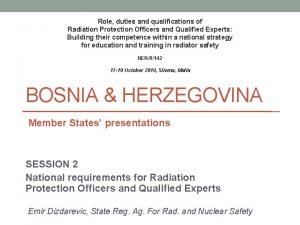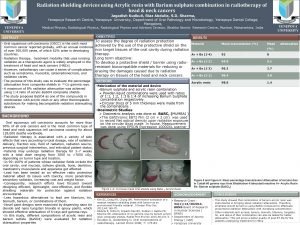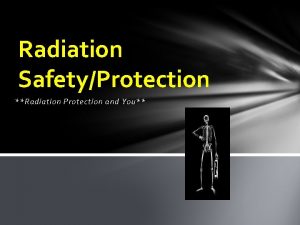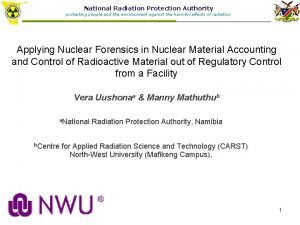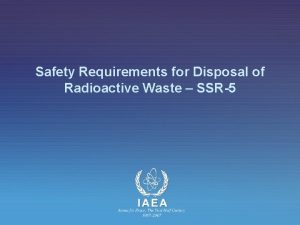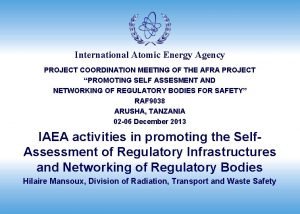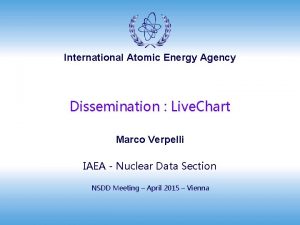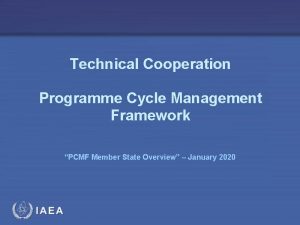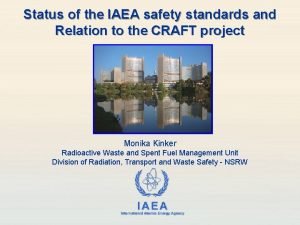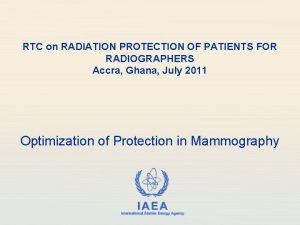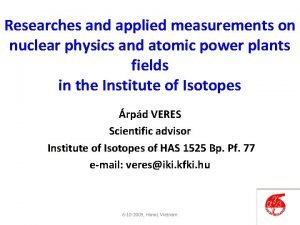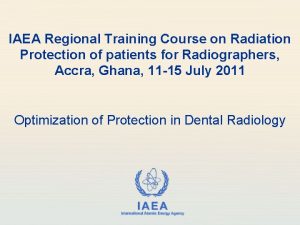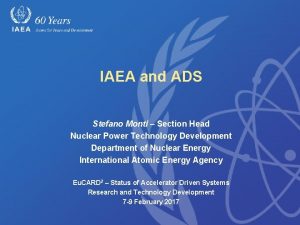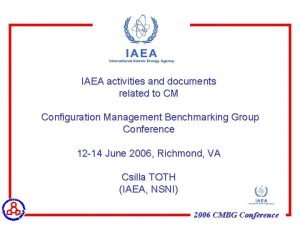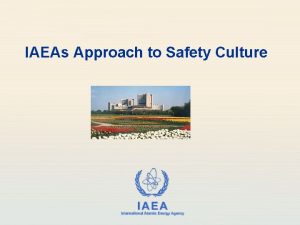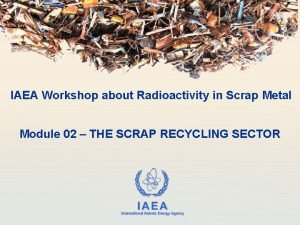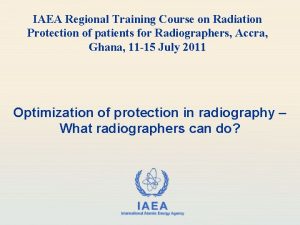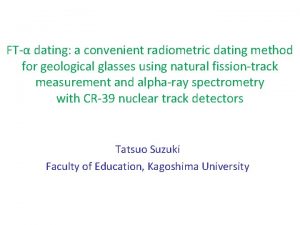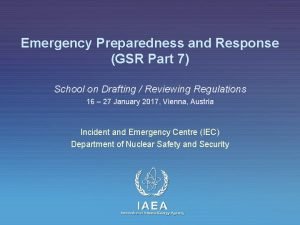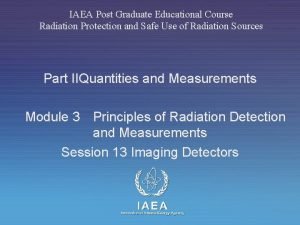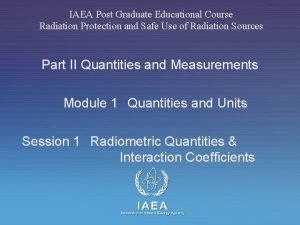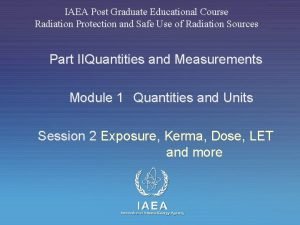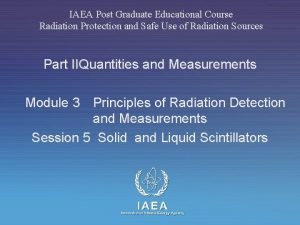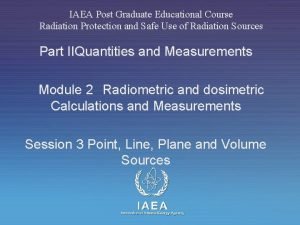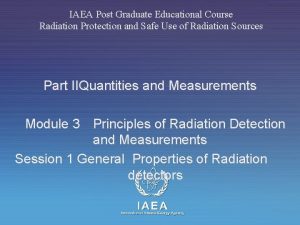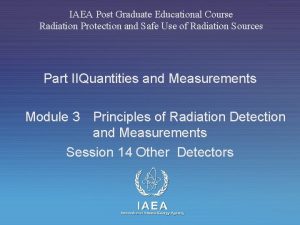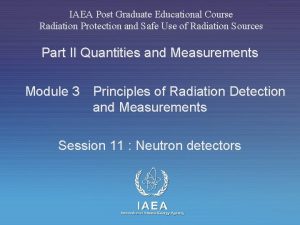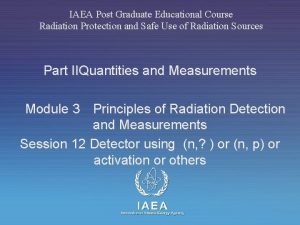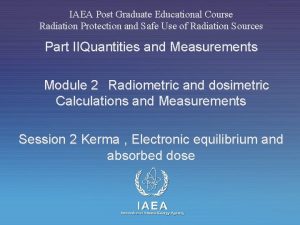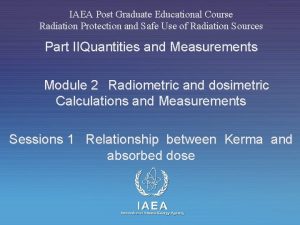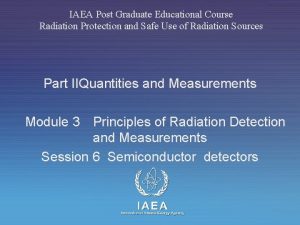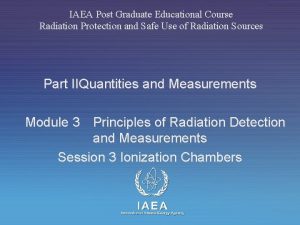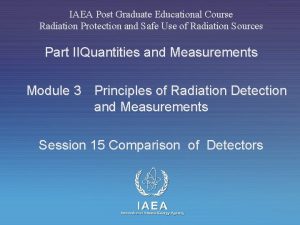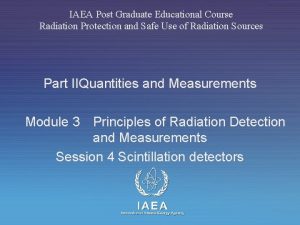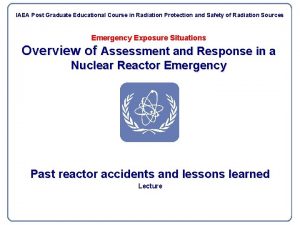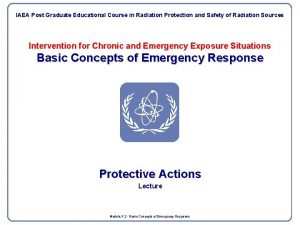IAEA Post Graduate Educational Course in Radiation Protection


















- Slides: 18

IAEA Post Graduate Educational Course in Radiation Protection and Safety of Radiation Sources PART IX: EMERGENCY EXPOSURE SITUATIONS Module 3 Basic Concepts for Emergency preparedness and Response for a nuclear accident or radiological emergency Lecture 3 Planning Areas and Zones

Introduction l The Chernobyl and Goiânia accidents have resulted in a re-examination of many emergency planning principles and practices l This lesson provides a practical step-bystep method for developing integrated operator, local and national radiation emergency response plans Module IX. 3 - Basic Concepts 2

Content l l l Basic concepts n Planning areas and zones n Planning levels and responsibilities n Emergency classes and conditions n Integrated planning concept Planning methodology n Ten tasks Summary Module IX. 3 - Basic Concepts 3

Background l l The range of potential radiation accidents is enormous, ranging n From a major reactor accident n To accidents involving small amounts of radioactive material A minimum level of planning is appropriate in every country, even in those without any known radiological activities Module IX. 3 - Basic Concepts 4

Background – Cont’d l l The response to radiation emergency is basically the same as the response to any accident involving hazardous material Planning on the basis of established principles of radiation protection and safety is essential Provisions should be developed to identify potential radiological hazards Radiological plans should be incorporated into plans for all types of hazardous materials Module IX. 3 - Basic Concepts 5

Threat Categories Threat Category Radiological Threat I Severe deterministic health effects off-site II Warranting urgent protective actions off-site, deterministic health effects on-site III No urgent protective actions off-site are warranted, severe deterministic health effects on-site IV Minimum level of threat – all countries V Food contamination due to transboundary contamination necessitating food restrictions Module IX. 3 - Basic Concepts 6

Planning Areas and Zones l l l Areas n On-site area n Off-site area Zones n Precautionary Action Zone (PAZ) n Urgent Protective Action Planning Zone (UPZ) Food restrictions planning distance Module IX. 3 - Basic Concepts 7

Concept of Emergency Planning Zones URGENT PROTECTIVE ACTION PLANNING ZONE (UPZ) PRECAUTIONARY ACTION ZONE (PAZ) ON-SITE Country B Country A National Border Module IX. 3 - Basic Concepts 8

Response and Planning Zones Sizes Facility PAZ UPZ FRPD Category I 3 – 5 km 5 – 30 km 50 – 300 km Category II On-site 0. 5 – 5 km 2 – 50 km Category III On-site Not required PAZ – Precautionary Action Zone UPZ – Urgent Protective Planning Zone FRPD – Food Restrictions Planning Distance Module IX. 3 - Basic Concepts 9

Planning Levels l Effective emergency response requires mutually supportive and integrated emergency planning at three levels: n Operator level n Off-site level n International level Module IX. 3 - Basic Concepts 10

Emergency Classes l l l General emergency Site area emergency Facility emergency Alert Uncontrolled source emergency Module IX. 3 - Basic Concepts 11

International Nuclear Events Scale l INES is designed to indicate how serious an event was after it is understood Module IX. 3 - Basic Concepts 12

Integrated Planning Concept Module IX. 3 - Basic Concepts 13

Planning Metodology l The planning methodology is n Modular n Based on extensive consultation n Iterative Module IX. 3 - Basic Concepts 14

The Tasks Implementation Time Designate National PC 1. National policy review 2. Perform a threat assessment 3. Develop the planning basis 4. Allocate responsibilities 5. Develop an interim capability 6. Write the NREP 7. Present the NREP 8. Implement detailed plans 9. Test the capability 10. Establish ongoing maintenance Module IX. 3 - Basic Concepts 15

Remember A long-term staff and budget must be provided to ensure that the capability is maintained Module IX. 3 - Basic Concepts 16

Summary l l A minimum level of planning is appropriate in every country Effective emergency response requires mutually supportive and integrated emergency planning There are ten tasks to develop and implement emergency response capability Plans are dynamic documents Module IX. 3 - Basic Concepts 17

Where to Get More Information INTERNATIONAL ATOMIC ENERGY AGENCY Method for the development of emergency response preparedness for nuclear or radiological accidents EPR-Method, IAEA, Vienna (2003) Module IX. 3 - Basic Concepts 18
 Radiation protection officer qualifications
Radiation protection officer qualifications Barium sulphate board for radiation protection
Barium sulphate board for radiation protection Cardinal principles of radiation protection
Cardinal principles of radiation protection National radiation protection authority namibia
National radiation protection authority namibia Ssr-5
Ssr-5 Saris iaea
Saris iaea Livechart iaea
Livechart iaea Pcmf iaea
Pcmf iaea Iaea gsr part 4
Iaea gsr part 4 Rtc protection film
Rtc protection film Nuclear wastes
Nuclear wastes Iaea
Iaea Stefano monti iaea
Stefano monti iaea Iaea
Iaea Iaea
Iaea Steel scrap
Steel scrap Iaea
Iaea Iaea
Iaea Iaea gsr part 7
Iaea gsr part 7
